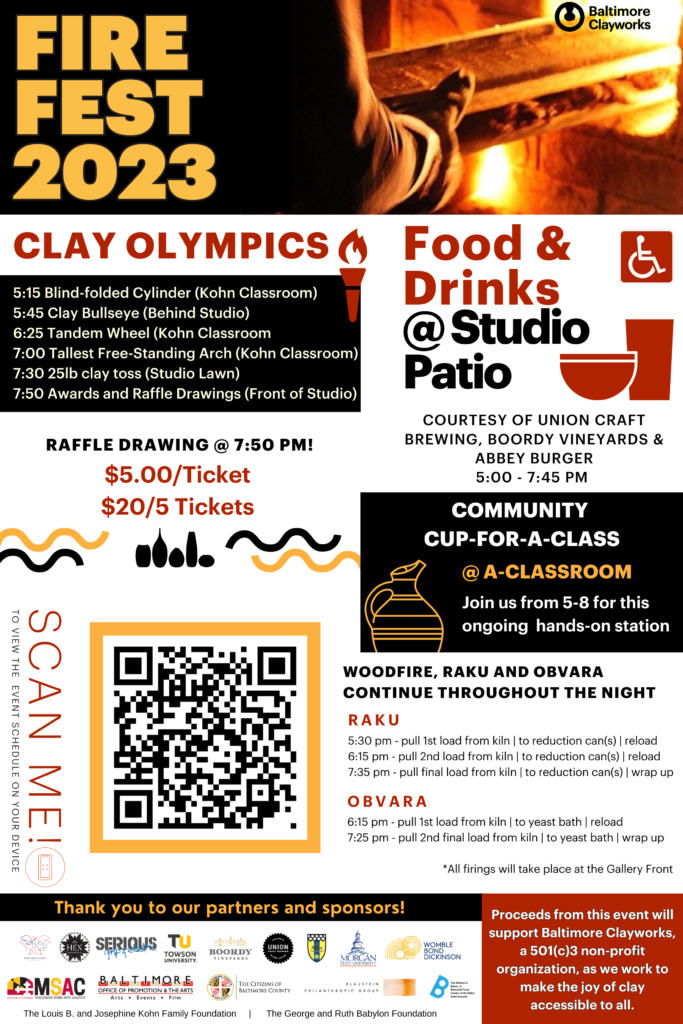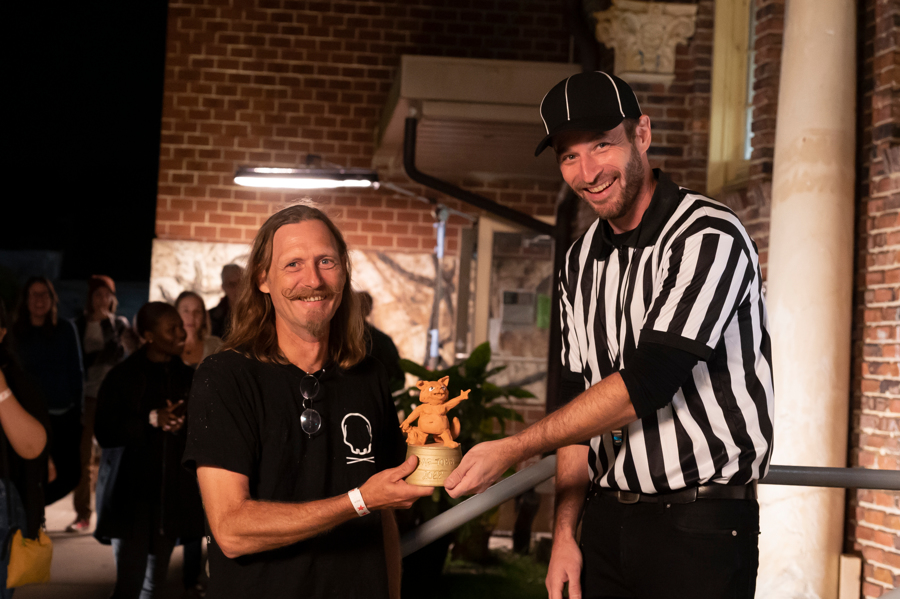
Campus Map

Event Schedule
5:15 – Blind-folded Cylinder – Individual (Kohn Classroom)
5:45 – Clay Bullseye – Individual event (Behind Studio)
6:25 – Tandem Wheel – Teams of 2 (Kohn Classroom
7:00 – Tallest free-standing arch Team of 3-5 (Kohn Classroom tables)
7:30 – 25lb clay toss (Studio Lawn)
7:50 Awards and Raffle Drawings (Front of Studio)
Community Cup-for-a-class @ A-Classroom – join us from 5-8 for this ongoing hands-on station!
Woodfire, Raku and Obvara Continue Throughout The Night
Raku
5:30 pm – pull 1st load from kiln | to reduction can(s) | reload
6:15 pm – pull 2nd load from kiln | to reduction can(s) | reload
7:35 pm – pull final load from kiln | to reduction can(s) | wrap up
Obvara
6:15 pm – pull 1st load from kiln | to yeast bath | reload
7:25 pm – pull 2nd final load from kiln | to yeast bath | wrap up
*All firings will take place at the Gallery Front
About the Processes
The Obvara Firing Process
The Obvara firing process, which originated in Eastern Europe around the 12th Century, involves scalding the finish on the pottery to seal the porous surface. Similar to the raku pottery process, a bisqued pot is heated, in this case to 1650°F (899°C) and removed from the heat. The difference is that the pot is then dipped into a specific obvara yeast mixture before being dunked in water to rapidly cool the piece. The effects are quite stunning.
Raku
Raku is a kind of earthenware glaze firing process, originally developed for the Japanese tea ceremony in the 16th cent., when a bisqued pot is heated, in this case to 1650°F (899°C) and removed from the heat, transferred to combustibles and smoldered, leaving a blackened, distinctively variegated or lustrous pattern.
Noborigama
Noborigama generally means a kiln with a partitioned multi-chamber for firing large quantities of ceramics and other ware, built on a slope so that gravity draws the flue gas through the kiln, keeping the high temperatures constant throughout the chamber, in this case to 2380°F (1305°C). In the Baltimore Clayworks Noborigama both chambers are fueled using pallet wood. We introduce a soda ash slurry to the 2nd chamber which provides enhanced surface glaze variations.





